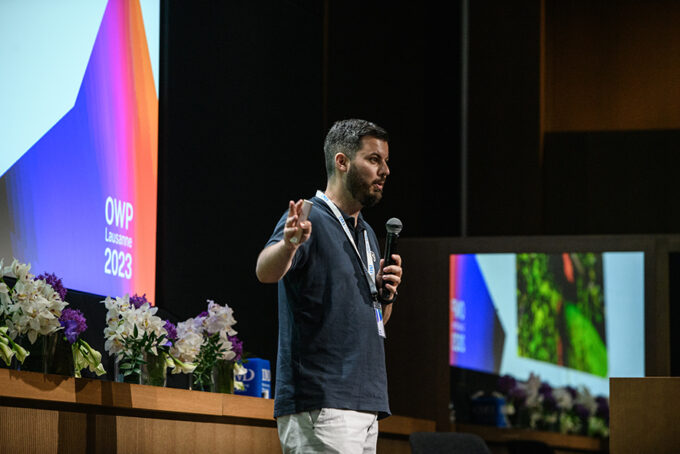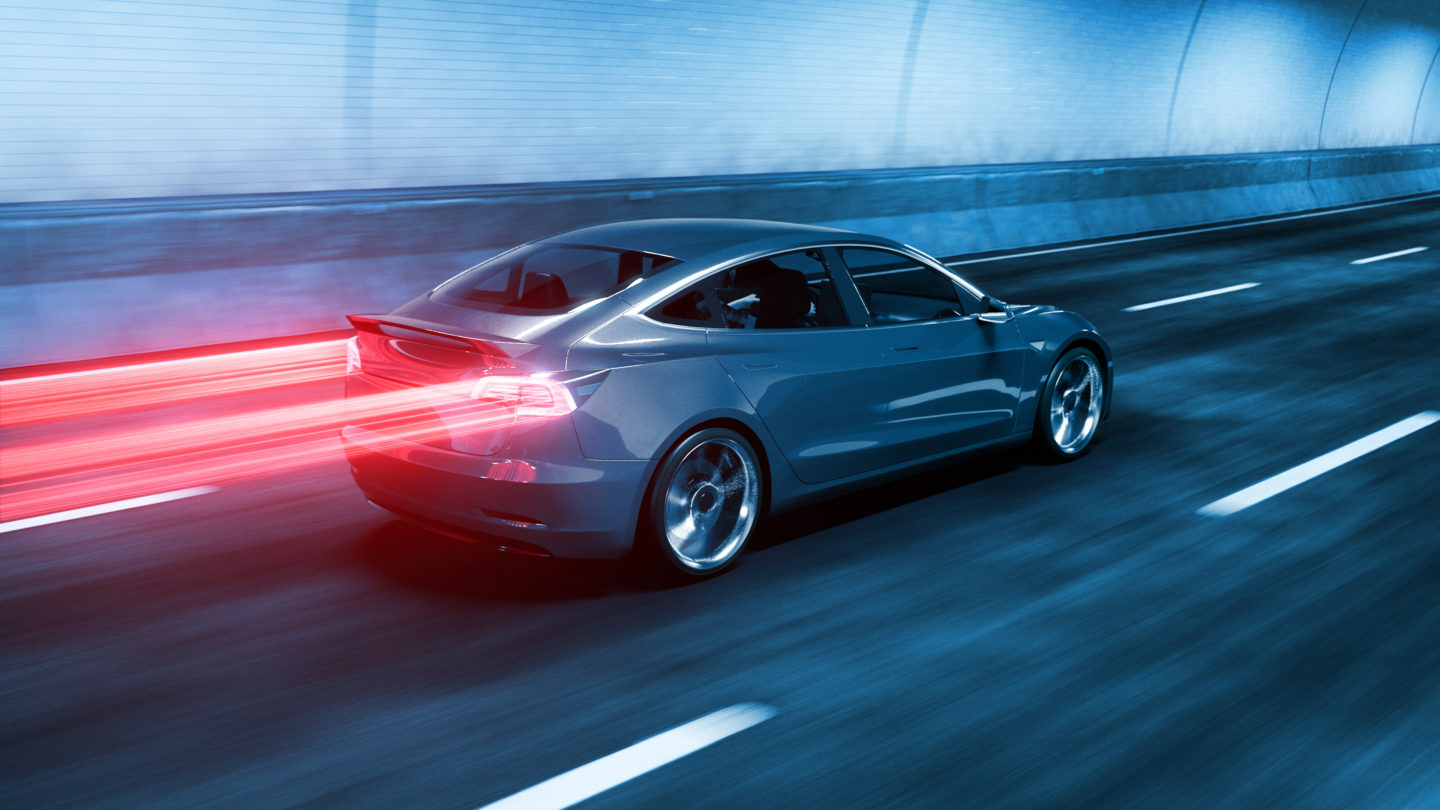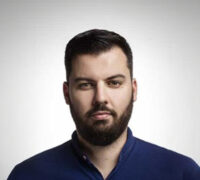
Unexpecting the expected to adapt to a changing world
In volatile, fast-changing, and complex situations, received wisdom and expertise can become a liability that’s hard to overcome. Here are seven ways to change your mindset....
Audio available
June 27, 2023 • by Mate Rimac in Innovation
Mate Rimac founded an electric supercar company in Croatia – a country with no automotive industry or start-up culture – when he was still a teenager, and against all odds, grew it...
This is the story of how I built a company. I had no previous experience. Before this job, I was in high school.
I’ve been crazy about cars all my life, since before I could walk or talk. To me, a car combines art and sciences, and is the only product I know of that produces such emotion in users.
I was born in Bosnia in 1988. When Yugoslavia fell apart in 1991, we moved to Germany. After a decade, we moved back to Croatia, where I was bullied because I didn’t speak the language very well. Despite being an average student, I was always tinkering in the garage on electronics.
For my high-school graduation project, I built a glove that acted both as a computer mouse and keyboard. I entered a national electronics competition and won. Then I was sent around the world to represent Croatia, giving me my first experience of the business world. Before then, I had never even heard the term “start-up”.
When I turned 18, I bought a beaten-up 1984 BMW E30 3 Series and started racing. After just two races, the engine exploded, so I decided to convert it into a battery-powered car. Back then, there weren’t many electric cars and those who were making them were people who hated cars. I wanted to show that electric cars could be fun and exciting, but was met with a lot of skepticism.
It was the first time anybody had raced an electric car against a combustion engine and people asked what I was doing with a washing machine on the racetrack. That changed once I started winning. In 2011, I broke five Guinness World Records for the fastest electric car.
The experience taught me that if you truly want to make an electric car, you should start from scratch. Inspired by one of my heroes, Swedish automotive engineer and entrepreneur Christian von Koenigsegg, who started his car company in 1994, I decided I wanted to build my own car.
There were several challenges. I had no capital, no experience, no know-how, and came from Croatia, a country known more for its beaches than its business ecosystem. To put it into context, German automotive company Volkswagen has four times the revenue of Croatia’s GDP.

So how did I get the money? After winning races, I caught the attention of someone working for a member of the Abu Dhabi Royal family. They asked if I could share some materials about the project I was working on. I prepared a brochure with some renderings and technical specifications. Then I got a call saying they wanted to buy two cars. There was one small problem: the company didn’t exist.
I started to develop a business plan and guessed how much you’d need to develop a car. It turns out I am a bad guesser. In five months, we had to develop and build a car. We worked day and night and didn’t go home for days. Then, the investors asked us to move production to the Middle East, but I refused. We were always working on a knife-edge, very close to going under. Even the electricity company cut us off after several missed payments.
So how did we survive? To pay the bills, we started to work for other companies, developing prototypes, working on robotaxis, and even electrified the Jaguar used at the wedding of Prince Harry and Meghan Markle.
Our next step was to develop a strategy. We decided to develop new technologies that we would showcase in our cars, then sell these technologies to other companies. We worked our way up, starting with small companies. My hero Christian von Koenigsegg became a customer and eventually we attracted industry leaders.
To pay the bills, we started to work for other companies, developing prototypes, working on robotaxis, and even electrified the Jaguar used at the wedding of Prince Harry and Meghan Markle.
Along the way, there were more setbacks. British TV presenter Richard Hammond lost control of one of our cars while racing in Switzerland and crashed. While he escaped with a fractured knee, the car burned for five days. It attracted a lot of media attention and questions were being raised about the car’s safety. But because we were depending on an insurance pay-out from the TV show’s producers, we couldn’t comment.
Somehow we survived this incident and started attracting more investment. In total, we have now raised €900m and in 2021, Volkswagen’s luxury sports car unit Porsche agreed to join a joint venture with Rimac Automobili and handed me responsibility for the 114-year-old Bugatti brand. We now operate three companies: Bugatti Rimac (which develops limited-edition electric hypercars), Rimac Technology (which supplies technology to other companies), and P3Mobility (which is developing self-driving robotaxis).
Whereas money used to be the number-one issue, now it’s space that is a bottleneck. I have an ambition to develop a campus on the outskirts of Zagreb, complete with an R&D facility, bars and restaurants, a racing track, and a kindergarten. It’s designed around people having the best time so that they can work in the most productive way.

“Be willing to give up everything else in your life and be aware that there are no quick wins.”
So what have I learned over the past 15 years?
When I started, I was met with a lot of skepticism. I was told it’s impossible to build a car in Croatia and it was hard to imagine that an electric car would ever beat a combustion engine in a race. We have since broken 23 records and now have the fastest accelerating car of any kind. I will admit that the skeptics were probably right. The odds of us being where we are were almost zero and we had to work through some really hard times to get here. Endurance was critical and to see an idea that was in my head turned into a beautiful, physical car is what drove me. I was sure that the world would go electric and I felt that way about electric cars a lot earlier than most people.
This brings me onto my second point. Many people have asked how I managed to attract talent. In the early days, I couldn’t afford German or Italian engineers, yet it didn’t matter because we were breaking new ground in terms of electrifying cars. We developed the know-how to build a car from the ground up in a country with no expertise and developed a skillset. Later on, when we got funding, we were able to attract foreign engineers. Many people saw it as an adventure to move to Croatia and work on something exciting. Now it’s easy for us to attract talent and we count more than 50 nationalities among our 2,500 employees. We have also opened offices in the UK, Berlin, and Bologna, so that we can hire talent that doesn’t want to relocate to Croatia. I also thought internationally from day one. If you work for Porsche, you have to learn German, whereas our language is English, making it easier to attract talent.
For me, it’s been important to have consistency and clarity of vision. Change for the sake of change disturbs people and prevents people from thinking longer term. I also like to be as transparent as possible; 90% of the time, we don’t have to talk about something because they know how I think and react.
What advice can I offer for other entrepreneurs wanting to pursue a dream this big? Be willing to give up everything else in your life and be aware that there are no quick wins. If you really want to develop a company for the longer term, you need to be ready to do it for at least 10 years. Pay yourself the least in your company. If you are ready for this, go ahead.
This article is inspired by a keynote session at IMD’s signature Orchestrating Winning Performance program, which brings together executives from diverse sectors and geographies for a week of intense learning and sharing with IMD faculty and business experts.

Founder & CEO, Rimac Group Open
Mate Rimac is a Croatian innovator, entrepreneur, and founder of the Croatian electric sports car company Rimac Automobili and Greyp Bikes, a high-tech eBike and eBike technology company. As a child, he had an interest in cars and electronics, bordering on obsession, and his ingenuity became obvious through some of his earliest schoolboy creations, including an ‘Electric Glove’ designed to replace a computer mouse and keyboard. By 17 years old he had already written his first two patents.

11 hours ago • by Martin Fellenz in Geopolitics
In volatile, fast-changing, and complex situations, received wisdom and expertise can become a liability that’s hard to overcome. Here are seven ways to change your mindset....
 Audio available
Audio available
July 10, 2025 • by Bruno Le Maire in Geopolitics
Former French finance minister Bruno Le Maire says Europe needs to act urgently to secure its supply of semiconductors or face relegation to the global slow lane. ...
 Audio available
Audio available
July 8, 2025 • by Mike Rosenberg in Geopolitics
A new framework encourages leaders to see the world as PLUTO – polarized, liquid, unilateral, tense, and omnirelational. It’s time to think differently and embrace stakeholder capitalism....
 Audio available
Audio available
July 7, 2025 • by Richard Baldwin in Geopolitics
The mid-year economic outlook: How to read the first two quarters of Trump...
Explore first person business intelligence from top minds curated for a global executive audience